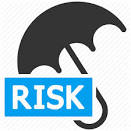Harvard T.H. Chan School of Public Health
Boston, MA – The air quality within an office can have significant impacts on employees’ cognitive function, including response times and ability to focus, and it may also affect their productivity, according to new research led by Harvard T.H. Chan School of Public Health.
The one-year study, which included participants in offices across six countries working in a variety of fields, including engineering, real estate investment, architecture, and technology, found that increased concentrations of fine particulate matter (PM2.5) and lower ventilation rates (measured using carbon dioxide (CO2) levels as a proxy) were associated with slower response times and reduced accuracy on a series of cognitive tests. The researchers noted that they observed impaired cognitive function at concentrations of PM2.5 and CO2 that are common within indoor environments.
“Our study adds to the emerging evidence that air pollution has an impact on our brain. The findings show that increases in PM2.5 levels were associated with acute reductions in cognitive function. It’s the first time we’ve seen these short-term effects among younger adults,” said Jose Guillermo Cedeño Laurent, a research fellow in the Department of Environmental Health and lead author of the study. “The study also confirmed how low ventilation rates negatively impact cognitive function. Overall, the study suggests that poor indoor air quality affects health and productivity significantly more than we previously understood.”
The study will be published online in Environmental Research Letters on September 9, 2021.
A growing body of research has shown that indoor and outdoor air pollution diminishes cognitive function. While it is well known that air pollutants such as PM2.5 can penetrate indoor environments, few studies have focused on how indoor exposures to PM2.5 and outdoor air ventilation rates affect cognition. Cedeño-Laurent noted that this is a particularly important area of research given the high percentage of time people spend indoors, especially office workers.
To better understand the issue, the research team enrolled more than 300 office workers in cities across China, India, Mexico, Thailand, the United Kingdom, and the United States. All participants were between the ages of 18 and 65, worked at least three days a week in an office building, and had a permanent workstation within the office. Each participant’s workspace was outfitted with an environmental sensor that monitored in real-time concentrations of PM2.5 and CO2, as well as temperature and relative humidity. Additionally, each participant had a custom-designed app on their phones through which cognitive tests and surveys could be administered.
Study participants were prompted to participate in tests and surveys at prescheduled times or when the environmental sensors detected levels of PM2.5 and CO2 that fell below or exceeded certain thresholds. Two types of tests were administered: One test required employees to correctly identify the color of displayed words and was used to evaluate cognitive speed and inhibitory control—the ability to focus on relevant stimuli when irrelevant stimuli are also present. The second test consisted of basic arithmetic questions and was used to assess cognitive speed and working memory.
The study found that response times on the color-based test were slower as PM2.5 and CO2 levels increased. They also found that accuracy on the color-based test was affected by PM2.5 and CO2 levels. For the arithmetic-based test, the study found that increases in CO2 but not PM2.5 were associated with slower response times. As concentrations of both pollutants increased, however, participants completed fewer questions correctly in the allotted test time.
“The world is rightly focused on COVID-19, and strategies like better ventilation and filtration are key to slowing infectious disease transmission indoors,” said Joseph Allen, associate professor of exposure assessment of science and senior author on the study. “Our research consistently finds that the value proposition of these strategies extends to cognitive function and productivity of workers, making healthy buildings foundational to public health and business strategy moving forward.”
Other Harvard co-authors included Jose Vallarino, as well as Piers MacNaughton, Emily Jones, Anna Young, Maya Bliss, and Skye Flanigan, who were previously affiliated with Harvard Chan School.
Funding for the study came from National Institutes of Health Grant T32-ES007069, the National Institute of Environmental Health Sciences Grant P30-ES000002, the National Institute for Occupational Safety and Health Grant T42-OH008416, and a gift from Carrier Global Corporation. Additional support was provided by Jones Lang LaSalle, Inc.
“Associations between acute exposures to PM2.5 and carbon dioxide indoors and cognitive function in office workers: a multicountry longitudinal prospective observational study,” Jose Guillermo Cedeño Laurent, Piers MacNaughton, Emily Jones, Anna S Young, Maya Bliss, Skye Flanigan, Jose Vallarino, Ling Jyh Chen, Xiaodong Cao, and Joseph G Allen, Environmental Research Letters, online September 9, 2021, doi: 10.1088/1748-9326/ac1bd8
Visit the Harvard Chan School website for the latest news, press releases, and multimedia offerings.
###
Harvard T.H. Chan School of Public Health brings together dedicated experts from many disciplines to educate new generations of global health leaders and produce powerful ideas that improve the lives and health of people everywhere. As a community of leading scientists, educators, and students, we work together to take innovative ideas from the laboratory to people’s lives—not only making scientific breakthroughs, but also working to change individual behaviors, public policies, and health care practices. Each year, more than 400 faculty members at Harvard Chan School teach 1,000-plus full-time students from around the world and train thousands more through online and executive education courses. Founded in 1913 as the Harvard-MIT School of Health Officers, the School is recognized as America’s oldest professional training program in public health.
https://www.eurekalert.org/news-releases/927765
Disclaimer: AAAS and EurekAlert! are not responsible for the accuracy of news releases posted to EurekAlert! by contributing institutions or for the use of any information through the EurekAlert system.


